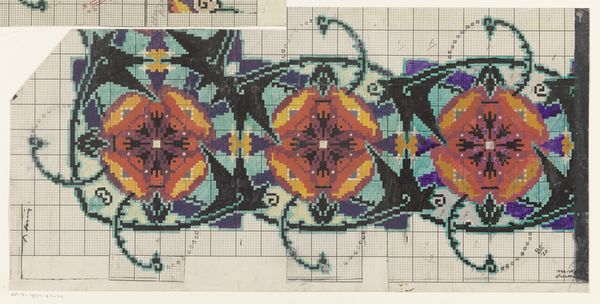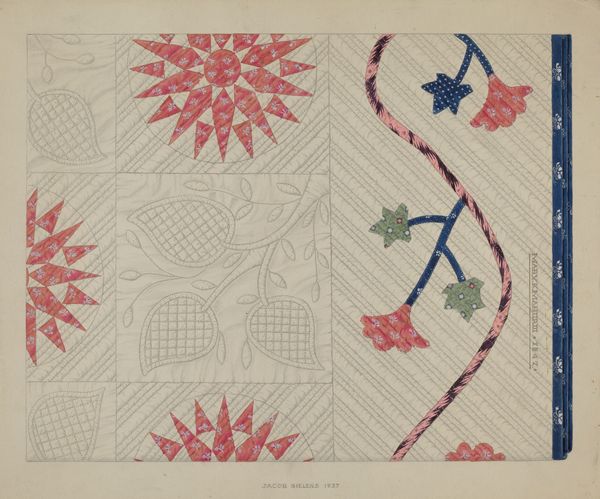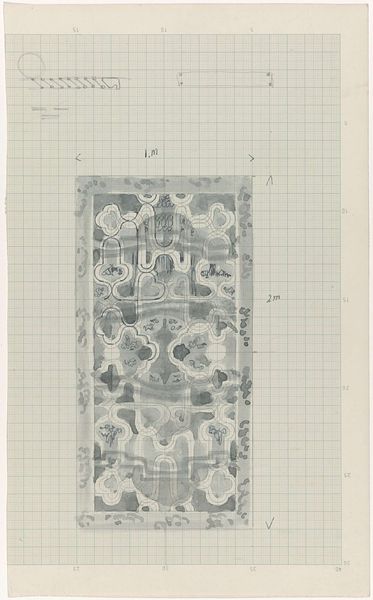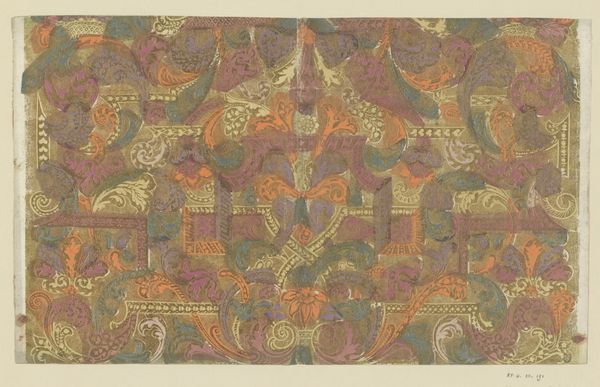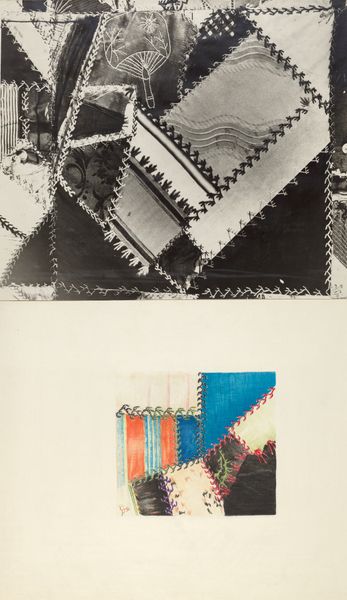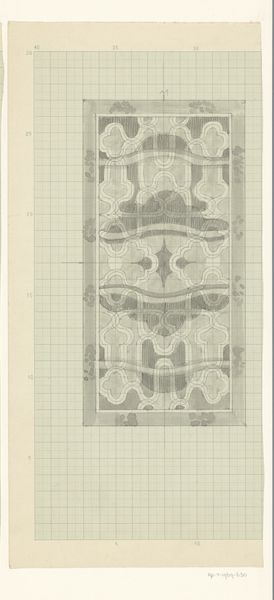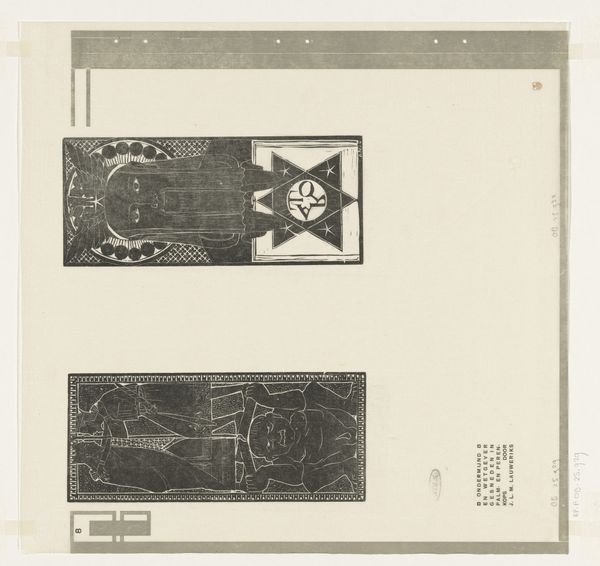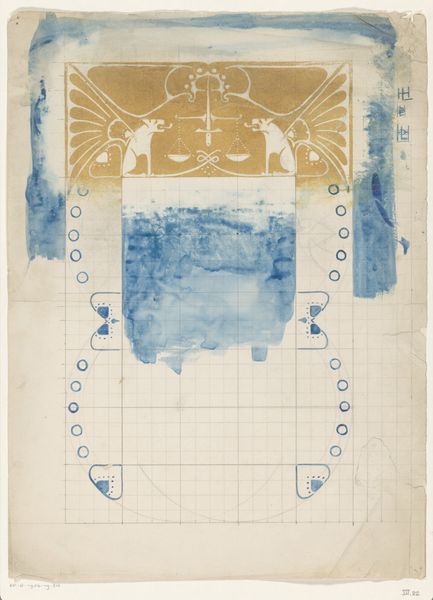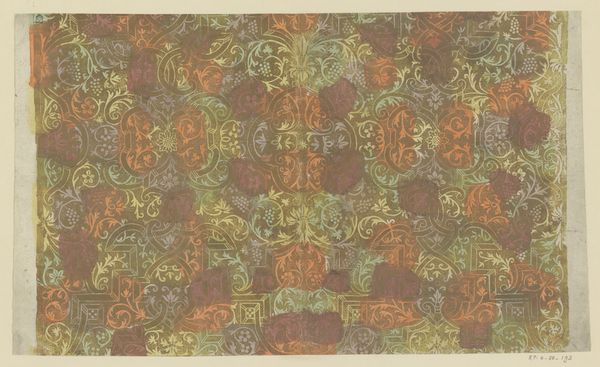
drawing, mixed-media, paper, watercolor
#
art-deco
#
drawing
#
mixed-media
#
water colours
#
paper
#
watercolor
#
decorative-art
#
mixed medium
#
mixed media
#
watercolor
Dimensions: height 178 mm, width 334 mm
Copyright: Rijks Museum: Open Domain
Curator: This vibrant drawing, entitled "Ontwerp voor een tapijt met floraal patroon," meaning "Design for a carpet with floral pattern," comes to us from the Dutch artist Dirk Verstraten, likely created between 1920 and 1930. The artist employed watercolor and mixed media on paper. Editor: It strikes me immediately as joyful. There's a bold energy in the color palette, the interplay of orange, black, and lavender against that grid. It feels very modern, almost like a textile translated into a pixelated, early computer graphic. Curator: It is quite arresting, isn't it? This work emerged during the Art Deco movement, and carpet designs such as this served not merely as functional objects, but as embodiments of forward-thinking aesthetics readily consumed by wider society through manufacture. We must also consider how Verstraten and others working in the decorative arts were exhibited alongside their more critically lauded counterparts in painting or sculpture, which helped in their wide consumption, yet it also cast the works as purely ornamental instead of conceptually vigorous art. Editor: Absolutely. Thinking of the symbols employed: the stylized flowers arranged within geometric, almost Islamic patterns... the overall feeling is one of harmony and controlled vitality. One can easily see the flower blossoms with geometric forms referencing the natural and the built. And what do you think about the almost cartoonish quality the use of line adds? Curator: Intriguing you should say that. I tend to think it speaks to how designs of the period balanced artistic aspiration with the realities of mass production. Such flattened designs are both visually pleasing and, crucially, easy to translate to machine-woven carpets and similar items accessible to growing audiences and changing markets. The cross hatching on the page itself gives us a further indication as to how the design was eventually produced for broader consumer accessibility. Editor: It’s fascinating to see the process so clearly laid bare here. Thinking about the imagery again…the floral motif recurs throughout different eras of art history because we read flowers as emblematic of beauty, but more significantly as visual symbols for mortality, decay, and life. How do we reconcile the fact that Verstraten reduces the blossoms to such bold yet flattened geometric shapes and also believe the imagery represents that wealth of symbology? Curator: I believe Verstraten and artists such as he did, at their best, take familiar historical motifs, and modernize them with forward thinking attitudes. And it seems you too, recognize and enjoy the visual cues of renewal this Art Deco moment employed to charm us! Editor: Perhaps I do. This pixelated beauty does possess more historical wealth than initially meets the eye.
Comments
No comments
Be the first to comment and join the conversation on the ultimate creative platform.
